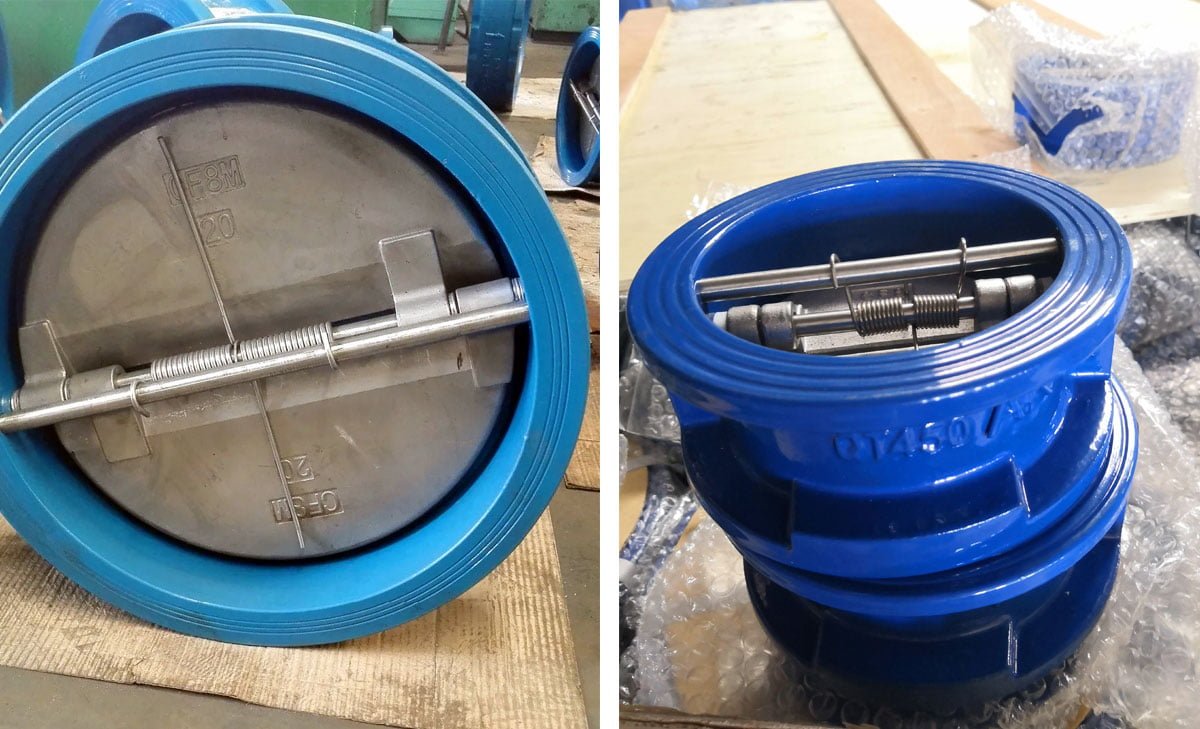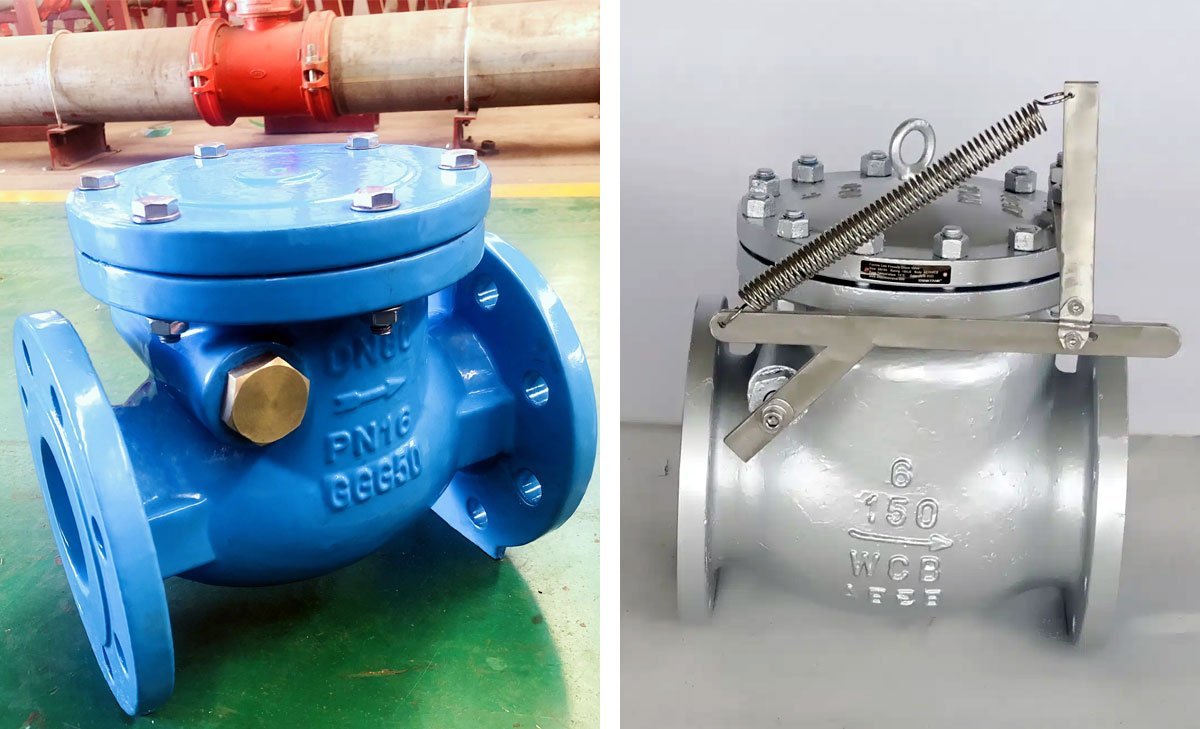Air Compressor Check Valves: Everything You Need to Know
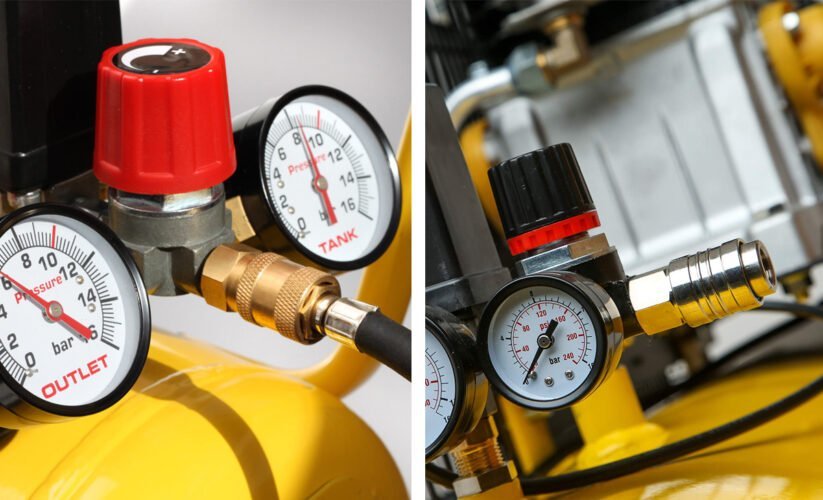
Table of Contents
ToggleUltimate Guide to Air Compressor Check Valves: Everything You Need to Know
The air compressor check valve is a crucial component found in various types of air compressors, including reciprocating piston compressors, rotary screw compressors, and scroll compressors. Its primary function is to enable air to flow in one direction while preventing it from flowing back in the opposite direction. This mechanism is essential for maintaining the pressurization of certain parts and preventing compressed air from returning to the compressor. Depending on the compressor type, size, and model, multiple check valves may be present in different locations within the compressor system. Understanding the role and placement of air compressor check valves is integral to ensuring the efficient operation of air compressors.
Understanding the Air Compressor Check Valve
When it comes to air compressors, the check valve is a crucial component that ensures proper functionality and efficiency. Understanding the air compressor check valve involves grasping its definition, basic function, role in air compressors, types, and its operation in various compressor models.
Definition and Basic Function
The air compressor check valve is a valve designed to allow airflow in one direction while preventing backflow in the opposite direction. This ensures that compressed air flows smoothly from the compressor to the attached equipment without any loss of pressure.
The Role of a Check Valve in Air Compressors
In the context of air compressors, the check valve plays a pivotal role in maintaining consistent air pressure within the system. Upon reaching the desired pressure level, the check valve closes to prevent air from flowing back into the compressor, thus helping to sustain optimal pressure for efficient operation.
How Check Valves Work in Different Compressor Models
The operation of check valves can vary depending on the compressor models. In reciprocating compressors, the check valve is essential in controlling the intake and discharge of air during the compression cycle. On the other hand, rotary screw compressors utilize check valves to manage the air intake and ensure efficient compression without leakage.
Understanding the air compressor check valve entails recognizing its fundamental purpose, the variations in types, and its role in different compressor models. This knowledge forms the basis for ensuring the proper functioning and maintenance of air compressor systems.
Types of Air Compressor Check Valves
Air compressor check valves are crucial components that ensure the proper functioning of air compressors. There are primarily two types of check valves used in air compressors: the ball check valve and the diaphragm check valve. Understanding the differences between these types is essential for maintaining and troubleshooting air compressor systems. Below is a detailed breakdown of each type of air compressor check valve:
Ball Check Valve
The ball check valve consists of a spherical ball that sits within a conical seat. When the air compressor is running, the force of the air flow pushes the ball away from the seat, allowing air to pass through. When the compressor shuts off, the ball is pushed back into the seat by the force of gravity and the remaining air pressure, preventing backflow.
Diaphragm Check Valve
The diaphragm check valve utilizes a flexible diaphragm to regulate airflow. As air enters the valve, it pushes the diaphragm against the valve seat, allowing air to flow through. When the compressor stops, the diaphragm returns to its original position, sealing the valve and preventing reverse airflow.
Key Differences
- The ball check valve is typically more responsive to changes in air pressure, making it ideal for applications where rapid opening and closing of the valve are required.
- The diaphragm check valve is known for its reliability and ability to provide a tight seal, making it suitable for applications where preventing backflow is critical.
Applications
- Ball check valves are commonly used in pneumatic systems, where quick response times are necessary, such as in impact wrenches and nail guns.
- Diaphragm check valves are often utilized in industrial air compressors and applications where maintaining pressure and preventing air leakage are top priorities.
Maintenance
- Both types of check valves require periodic inspection and maintenance to ensure optimal performance. This includes checking for wear and tear, cleaning or replacing the sealing surfaces, and verifying proper seating of the ball or diaphragm.
Understanding the intricacies of ball and diaphragm check valves is crucial for maintaining efficient and reliable air compressor systems. By knowing the differences, applications, and maintenance requirements of each type, compressor operators and technicians can make informed decisions to keep their equipment operating at peak performance.
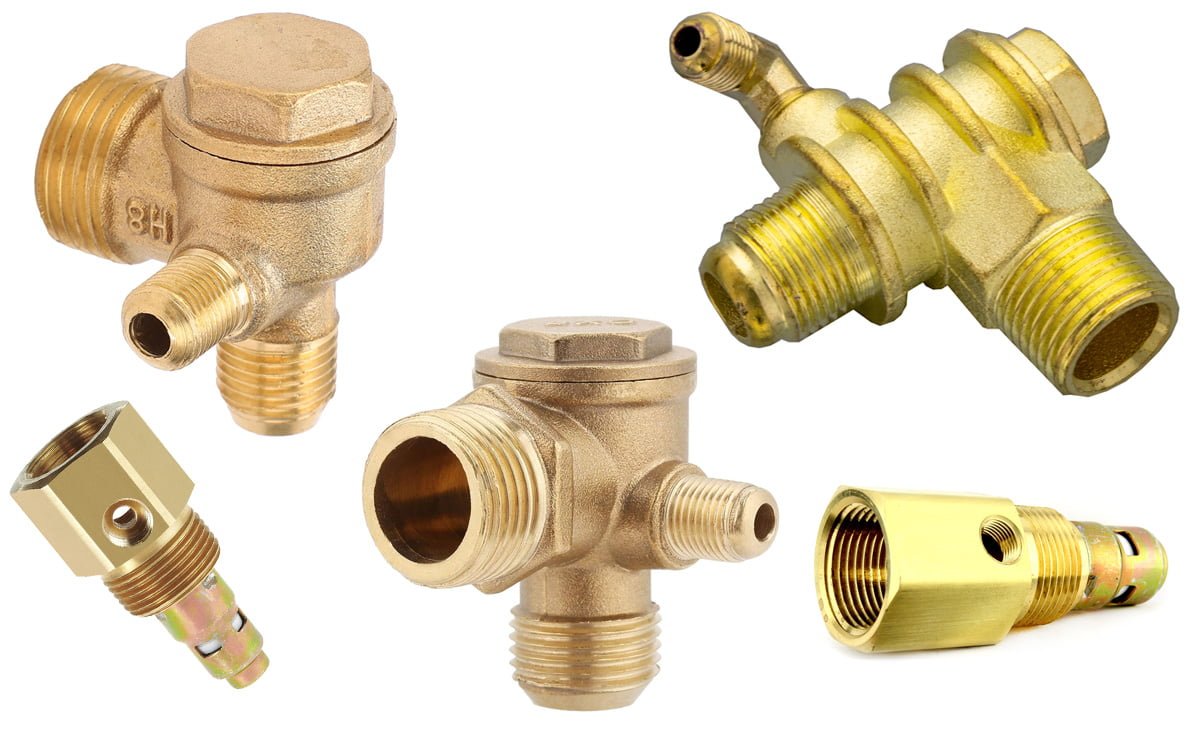
Importance of Check Valves in Air Compressor Systems
Compressed air is a crucial component in various industrial and commercial applications. It is essential to ensure that the compressed air remains contained within the intended areas to prevent wastage and maintain safety. Check valves play a vital role in air compressor systems by enabling the unidirectional flow of compressed air while preventing backflow. Understanding the importance of check valves in air compressor systems is fundamental for ensuring efficient and reliable operation.
Keeping Compressed Air Contained
Check valves are instrumental in keeping compressed air contained within the designated areas of an air compressor system. By allowing airflow in only one direction, these valves prevent the reverse flow of compressed air, ensuring that it remains within the intended pathways. This containment of compressed air is critical for maintaining consistent pressure levels and optimizing the overall performance of the air compressor system.
Preventing Backflow and Potential Damage
The prevention of backflow is a primary function of check valves in air compressor systems. Backflow occurs when compressed air reverses its direction, leading to potential damage to the compressor components and the overall system. Air compressor check valves act as a barrier against backflow, safeguarding the system from the damaging effects of air reversal. By effectively blocking reverse flow, the check valve promotes the longevity and reliability of the air compressor system.
Ensuring Efficient Compressor Operation
Efficient compressor operation relies on the proper functioning of check valves within the system. By maintaining the unidirectional flow of compressed air, check valves contribute to the smooth and continuous operation of the compressor. This ensures that the compressor can consistently deliver the required airflow without interruptions or fluctuations. Additionally, the efficient operation facilitated by check valves promotes energy savings and prolongs the service life of the compressor.
The significance of check valves in air compressor systems lies in their ability to maintain containment, prevent backflow, and ensure efficient operation, ultimately contributing to the overall reliability and performance of the system. Understanding these key functions of check valves is essential for optimizing air compressor functionality and minimizing potential challenges associated with air compression processes.
Does an Air Compressor Need a Check Valve?
Yes, an air compressor does need a check valve for both technical performance and safety reasons. A check valve, also known as a non-return valve, allows airflow in one direction only while preventing backflow. In the context of an air compressor, a check valve plays a crucial role in maintaining optimal performance and ensuring safe operation.
From a technical standpoint, the presence of a check valve in an air compressor system prevents the compressed air from flowing back into the compressor when it shuts off. Without a check valve, the compressed air could escape through the intake port, causing a loss of pressure in the system. This not only affects the efficiency of the compressor but also leads to increased wear and tear on the compressor components as it tries to compensate for the lost pressure.
Furthermore, the absence of a check valve can result in “compressor stall.” This occurs when the compressed air flows back into the compressor, causing resistance and potentially damaging the motor. This can lead to increased maintenance and downtime, impacting the overall productivity of the system.
In terms of safety, a check valve helps to prevent potential hazards associated with backflow. For example, if the air compressor is located in a confined space or an area with restricted ventilation, backflow of compressed air could create a dangerous pressurized environment. Additionally, in the event of a sudden loss of power or emergency shutdown, a check valve ensures that the compressed air does not flow back into the system, minimizing the risk of accidents or equipment damage.
It’s important to note that different types of check valves are available, including ball check valves, swing check valves, and diaphragm check valves. The selection of the appropriate check valve depends on factors such as flow rate, pressure, and compatibility with the air compressor system.
In summary, the inclusion of a check valve in an air compressor system is essential for maintaining technical performance, preventing potential hazards associated with backflow, and ensuring the overall safety and efficiency of the system. Whether for industrial, commercial, or residential applications, the presence of a check valve is a critical component in the proper functioning of an air compressor.
Identifying Check Valves on Your Air Compressor
Locating Check Valves on Piston Compressors
On a piston compressor, the check valve can typically be found on the pressure switch or pressure relief valve. Its location may vary depending on the specific make and model of the compressor. The check valve prevents backflow from the tank to the pump when the compressor is not running, ensuring that air pressure is maintained within the tank.
Check Valves in Rotary Screw Compressors
In rotary screw compressors, the check valve is commonly located on the outlet of the air receiver tank. It serves the same purpose as in piston compressors, preventing the reverse flow of air from the tank to the compressor and maintaining proper pressure levels during operation and shutdown.
Check Valves in Scroll Compressors
Unlike piston and rotary screw compressors, scroll compressors do not have traditional check valves. These types of compressors utilize dynamic discharge valves that perform a similar function by preventing backflow. These valves are integrated into the design of the compressor and do not require separate identification or maintenance.
Common Signs of Check Valve Failure
Recognizing potential failure in the check valve is crucial for maintaining the efficiency of the air compressor. Common signs of check valve failure include irregular pressure build-up in the tank, air escaping from the pressure switch or unloader valve when the compressor is not in use, and increased cycling of the compressor. These symptoms may indicate a faulty or malfunctioning check valve that requires inspection and potential replacement to avoid further damage to the compressor system.
The Mechanics of Air Compressor Check Valves
Check valves are vital components of air compressors, ensuring the efficient and safe operation of these systems. Understanding the mechanics of air compressor check valves provides valuable insight into their design, function, and materials used in their construction.
Design and Components
Air compressor check valves are engineered to allow the unidirectional flow of air while preventing backflow. Their design typically includes a spring-loaded poppet or a swing mechanism, which opens when air pressure exceeds a certain threshold, enabling air to pass through in one direction. The valve quickly closes once the airflow diminishes, effectively sealing the passage and preventing reverse flow.
These components are precision-engineered to withstand the high pressures and temperatures commonly encountered in air compressor systems. Materials such as stainless steel, brass, or thermoplastic polymers are often utilized to ensure durability and reliable performance in various operating conditions.
The Direction of Airflow in Air Compressor Check Valves
The directional flow of air in check valves is a crucial aspect of their operation. When air pressure on the inlet side surpasses that of the outlet side, the valve opens, facilitating the flow of compressed air. This unidirectional flow ensures that pressurized air moves through the compressor system while preventing backflow, thereby maintaining the integrity of the system’s components and optimizing overall efficiency.
The seamless regulation of airflow direction within the check valve mechanism is essential for sustaining consistent and controlled pressurization, contributing to the reliable performance of air compressor systems.
Materials Used in Air Compressor Check Valve Construction
The construction of air compressor check valves involves the utilization of materials renowned for their resilience and corrosion resistance. Stainless steel, known for its exceptional strength and resistance to oxidation, is a prevalent choice for critical components within the valve assembly. Brass, recognized for its superior machinability and thermal conductivity, is also commonly employed in check valve construction.
Thermoplastic polymers such as polytetrafluoroethylene (PTFE) and acetal provide additional options for check valve construction, offering chemical inertness and high-temperature tolerance. These materials enable the fabrication of check valves that can withstand the demanding conditions prevalent in air compressor applications, ensuring longevity and reliability.
By comprehending the design, airflow direction, and construction materials of air compressor check valves, operators and maintenance personnel can gain valuable insights into the pivotal role these components play in ensuring the efficient and dependable operation of air compressor systems.
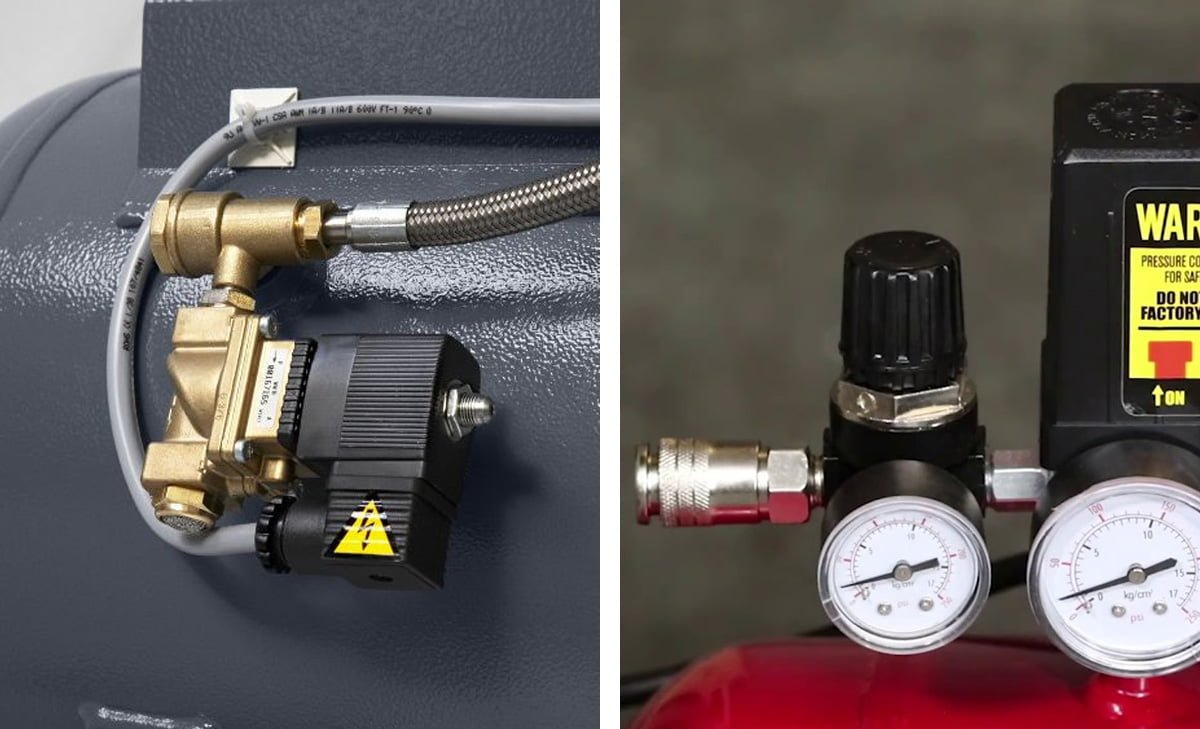
Installation and Maintenance of Check Valves
Check valves play a crucial role in ensuring the smooth and uninterrupted flow of fluid in your air compressor system. Proper installation and regular maintenance of check valves are essential to their efficient operation and longevity. Here’s a comprehensive guide on how to install and maintain check valves in your air compressor setup.
How to Install a Check Valve on Your Air Compressor
When installing a check valve on your air compressor, ensure that it is placed in the correct orientation to allow airflow in one direction only. Assemble the check valve in line with the airflow, ensuring that the arrow on the valve body aligns with the direction of the air flow. Tighten the connections securely to prevent any air leaks. Conduct a thorough check to ensure that the valve is properly installed before putting it into operation.
Routine Check Valve Maintenance Tips
Regular maintenance is key to ensuring the optimal performance of check valves in your air compressor system. Here are some maintenance tips to consider:
- Inspect the check valve for any signs of leaks, corrosion, or mineral deposits.
- Clean the valve and its surrounding area regularly to prevent the accumulation of debris and dirt.
- Lubricate the moving parts of the valve to ensure smooth operation and prevent premature wear and tear.
- Conduct periodic inspections to identify any potential issues and address them promptly.
Troubleshooting Common Air Compressor Check Valve Issues
Despite regular maintenance, air compressor check valves may develop issues that require troubleshooting. Here are some common problems to watch out for:
- Air leaks: Check for loose connections or damaged O-rings and gaskets. Tighten connections and replace any damaged seals.
- Restricted airflow: Inspect the valve for any obstructions or debris that may be hindering the flow of air. Clean the valve thoroughly to remove any blockages.
- Valve failure: If the check valve fails to operate as expected, consider replacing it with a new one to restore optimal functionality.
When to Replace Your Air Compressor Check Valve
Over time, air compressor check valves may experience wear and tear, leading to diminished performance. It’s essential to know when it’s time to replace your air compressor check valve:
- If routine maintenance fails to resolve persistent issues with the check valve’s performance, it may be time to consider a replacement.
- Visible signs of damage, such as cracks or significant corrosion, indicate the need for immediate replacement.
- Decreased efficiency or increased air leaks are indicators of a check valve reaching the end of its service life.
Regularly assess the condition of your air compressor check valve and replace it when necessary to maintain the efficiency and reliability of your air compressor system. By following these installation and maintenance guidelines, you can ensure that your check valve operates seamlessly, contributing to the overall performance of your air compressor.
How to Clean Air Compressor Check Valve
Cleaning an air compressor check valve is an important maintenance task to ensure the proper functioning of the compressor. To begin, it is crucial to adhere to proper safety precautions due to the high pressure associated with air compressors. Before attempting to clean the check valve, always depressurize the air compressor and wear appropriate safety gear such as gloves and eye protection.
The process of cleaning the air compressor check valve involves disassembling the valve and inspecting it for any debris or buildup that may be hindering its function. Using a suitable solvent or cleaning solution, carefully remove any contaminants from the valve components. It’s essential to exercise caution during this process and handle the valve components with care to avoid damage.
In some instances, the complexity of the check valve or the presence of significant blockages may necessitate the involvement of a professional with expertise in valve maintenance. Given the critical role of the check valve in the proper operation of the air compressor, seeking professional assistance can ensure that the cleaning process is carried out effectively and safely.
Following the cleaning process, it is advisable to perform a thorough inspection of the check valve to verify that it is free from any residue or obstructions. Proper reassembly and testing of the air compressor are essential to confirm that the check valve is functioning as intended.
By following these guidelines and being mindful of the security concerns associated with high-pressure systems, individuals can effectively clean their air compressor check valve. However, it is important to recognize when the expertise of a professional may be required to address more complex maintenance needs.
Selecting the Right Air Compressor Check Valve
An air check valve plays a crucial role in maintaining the efficiency and performance of an air compressor. Selecting the right check valve for your air compressor is essential to ensure optimal functionality and prevent any potential issues. Here are the key factors to consider when choosing a check valve, the differences between OEM and aftermarket check valves, and the impact of check valve quality on the overall performance of your air compressor.
Factors to Consider When Choosing an Air Compressor Check Valve
When selecting a check valve for your air compressor, it’s important to consider factors such as the maximum operating pressure, flow capacity, compatibility with different types of compressors, and the specific application requirements. Additionally, the material of the check valve should be compatible with the type of gas or air being processed to ensure longevity and efficient operation.
Differences Between OEM and Aftermarket Check Valves
Original Equipment Manufacturer (OEM) check valves are designed and manufactured by the same company that produced the air compressor, ensuring precise compatibility and performance. Aftermarket check valves, on the other hand, are produced by third-party manufacturers and may offer cost-effective alternatives. Understanding the differences between these options can help in making an informed decision based on the specific needs and budget considerations.
The Impact of Check Valve Quality on Performance
The quality of the check valve directly influences the overall performance and reliability of the air compressor. A high-quality check valve ensures proper sealing, minimal resistance to flow, and durability, contributing to efficient operation and reduced maintenance requirements. Conversely, a substandard check valve may lead to issues such as backflow, pressure loss, and increased wear and tear on compressor components, ultimately affecting the system’s performance and longevity.
By carefully evaluating these factors and understanding the implications of check valve quality, you can make an informed decision when selecting the right check valve for your air compressor. This ensures optimal performance, longevity, and cost-effectiveness in the long run.
How Check Valves Affect Air Compressor Performance
Regular maintenance and the ability to identify the early warning signs of component failure are critical to the overall care and performance of check valves in air compressor systems. Understanding the impact of check valves on compressor performance is crucial for ensuring the efficient and reliable operation of the entire system.
Efficiency and Energy Consumption
Check valves play a significant role in the efficiency and energy consumption of air compressor systems. A properly functioning check valve ensures that air flows in the intended direction, preventing backflow and maintaining consistent pressure levels. When a check valve is damaged or worn out, it can lead to air leaks and fluctuations in pressure, ultimately causing the compressor to consume more energy to compensate for the inefficiencies.
The Relationship Between Check Valves and Compressor Lifespan
The condition of check valves directly influences the lifespan of air compressors. When air compressor check valve fails to operate effectively, the entire compressor system may be compromised, leading to increased wear and tear on other components. Regular maintenance and timely replacement of faulty check valves are essential for extending the lifespan of air compressors and minimizing the risk of unexpected downtime.
Addressing Check Valve Noise Issues
In addition to affecting performance, damaged check valves can contribute to excessive noise levels in air compressor systems. Air leaks caused by check valve failure can result in unwanted hissing or vibrating noises, indicating inefficiencies within the system. By addressing check valve issues promptly through maintenance and replacement, the overall noise levels of the compressor can be reduced, creating a more conducive working environment.
By understanding the role of check valves in air compressor performance, monitoring efficiency and energy consumption, addressing the impact on compressor lifespan, and dealing with noise issues, businesses can optimize the operation of their compressor systems and avoid costly disruptions. Regular maintenance and proactive measures are key to ensuring the reliable and efficient performance of air compressor check valves.
Safety Concerns Involving Air Compressor Check Valves
In any environment where air compressors are used, safety should always be a top priority. Air compressor check valves play a crucial role in preventing accidents and ensuring the safe operation of compressed air systems. This section will discuss the significance of check valves in maintaining safety, the importance of compliance with safety regulations, and best practices for safe check valve operation.
The Role of Check Valves in Preventing Accidents
Check valves are essential components of air compressor systems, designed to prevent the backflow of air and maintain pressure within the system. By ensuring the one-way flow of compressed air, these valves help to minimize the risk of hose whip, which can result in serious injuries and damage to equipment. In the event of a surge or sudden increase in pressure, the check valve automatically shuts off airflow, effectively reducing the hazards associated with uncontrolled air supply hoses.
Compliance with Safety Regulations
Regulatory agencies such as OSHA and MSHA mandate the use of safety check valves in compressed air supply systems to mitigate potential hazards. Compliance with these safety regulations is not only a legal requirement but also a fundamental aspect of maintaining a secure work environment. Selecting the right type of air compressor check valve and installing it in the appropriate location is essential to meeting safety standards and preventing accidents.
Best Practices for Safe Check Valve Operation
Proper installation of air compressor check valves is crucial for their effective operation. Safety check valves should be installed in line with the directional arrows, ensuring that the one-way flow is maintained. It is recommended to install the check valve at the air source before the first hose assembly and any mating quick coupling. Additionally, placing an additional valve at manifold receivers or branch lines, and using hose whip check cables or nylon safety restraints, further enhances safety measures.
When selecting an air compressor check valve, understanding its operational mechanism is vital. These valves operate based on pressure differentials, utilizing a spring and valve assembly to control airflow. It is imperative to choose a check valve with the appropriate cut-off range to ensure optimal performance and safety.
In conclusion, prioritizing safety concerns involving air compressor check valves is indispensable for accident prevention and regulatory compliance. By understanding the critical role of check valves, adhering to safety regulations, and implementing best practices for their operation, organizations can create a secure and hazard-free working environment.
Conclusion for Air Compressor Check Valves
Understanding the significance of the air compressor check valve is crucial for maintaining the efficiency and functionality of your compressor system. It serves the important purpose of allowing air to flow in one direction while preventing backflow, thereby ensuring the proper pressurization of different components within the system.
Check valves are integral to various types of compressors, including reciprocating piston compressors, where they are strategically placed to control airflow and maintain the desired air pressure. They play a pivotal role in preventing air from escaping back through the compressor inlet and ensuring that the compressed air remains contained within the designated areas of the system.
By grasping the essential functions and placement of air compressor check valves, you can effectively optimize the performance and durability of your compressor, thereby enhancing its overall functionality and longevity.












